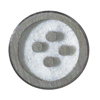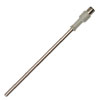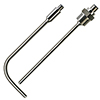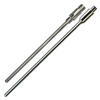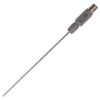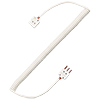 I know what you’re thinking: “Mission Impossible cable?” And you’re absolutely right!
I know what you’re thinking: “Mission Impossible cable?” And you’re absolutely right!You see, Mineral Insulated cables, or simply MI cables, are cables in which conductors or wires are enclosed by a metal jacket and insulated with hard-packed Magnesium Oxide (MgO). This basic construction provides high-temperature capability, exceptional electrical isolation, and physical protection for the conductors especially when subjected to harsh environments. (Sounds quite suitable for applications that would otherwise be impossible, right?)
Here are the exploded guts for the inquisitive mind: From the outside in, MI cable consists of:
- Metal Sheath:
- Metal sheaths can consist of a number of different metals including 304, 310, 316, 321 Stainless Steel (SS) as well as Inconel® 600. In the most extreme cases, a customized sheath can be manufactured to withstand temperatures up to 1150°C (2102°F).
- Conductor wire:
- Conductors can be made from a variety of materials, the most common include thermocouple alloys, copper, nickel, nickel-plated copper, constantan and others. The number of conductors will vary from 1 to 6 or more, depending on the application where it will be used.
- Magnesium Oxide (MgO):
- MgO is used to isolate the conductors from the external sheath and from each other. This is a great material to use due to its dielectric constant, rounded grain structure, high-temperature capability, and its chemical inertness.
Contact An Expert
Why MI Cables Over Open-Wire?
MI cables are used in high temperature or high pressure environments for a good reason:
- Low flammability
- Resists oxidation
- High insulation resistance
- Exceptional vibration resistance to protect the mechanical conditions of the internal conductor wires
- Can be drawn down to extremely small diameters, providing fast response times when used in temperature sensors
- Can be formed/bent in the field without causing short circuits between the sheath and the internal wires, or between wires
- Can be easily sealed around when used as extension or control cables in critical environments
Caution
While MI cables perform exceptionally well in many applications, the MgO insulation is very susceptible to moisture absorption if left exposed. These cables must be sealed and protected against moisture intrusion to maintain their high dielectric/insulation resistance characteristics.
Note: Consult with MI cable manufacturer for their recommended insulation best practices.
Note: Consult with MI cable manufacturer for their recommended insulation best practices.
MI Cable with Thermocouples and RTDs
MI cable is typically used in the construction of temperature sensors including thermocouples and resistance temperature detectors (RTDs). The high temperature, high vibration, and formability of MI cable allows for thermocouples to be made as small as 0.010" in diameter, and RTDs that are rugged enough to withstand high temperature and high vibration applications. MI cable can also be used as an extension cable connecting thermocouples and RTDs with their accompanying meter, controller, data acquisition device, wireless transmitter, or other instrumentation. MI cable is also used for maintaining circuit integrity for fireproof applications, which is out of the scope of this article.
Think MI cable for high temperature or high pressure applications to protect your conductor wire, which protects your readings, ultimately protecting your process!
Contact An Expert
Tip!
$
$
There is a method of using MI cable with extension wire to save $$$!
Use premium MI cable as a probe within the process and then connect the end of the probe to the extension wires (of the same sensor wire material) to transmit the signal from the core process back to the meter, controller, DAQ system, etc.
Use premium MI cable as a probe within the process and then connect the end of the probe to the extension wires (of the same sensor wire material) to transmit the signal from the core process back to the meter, controller, DAQ system, etc.
Think MI cable for high temperature or high pressure applications to protect your conductor wire, which protects your readings, ultimately protecting your process!
Contact An Expert
“Where” Applications or “When” to Use!
RTD and Thermocouple Sensors Constructed Using MI Cable are Used Extensively in Various Applications such as:

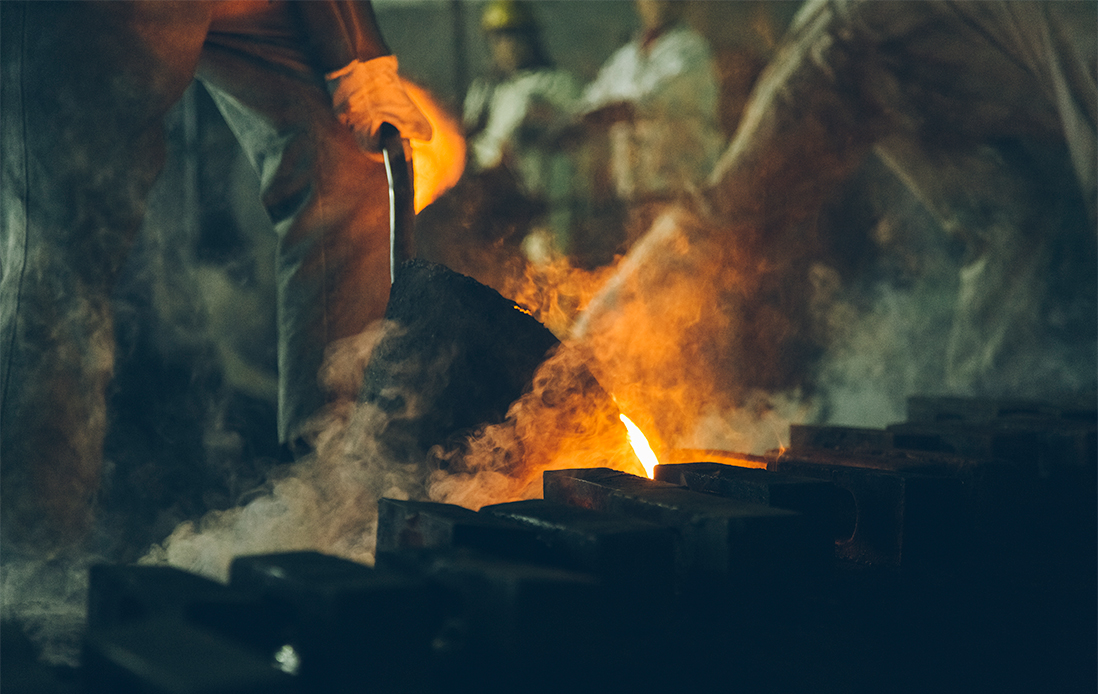

- Solid waste incinerators
- Sintering powdered metals
- Firing ceramic materials
- Gas or oil fired furnaces
- Fuel fired heat exchangers
- Box furnaces
- Nuclear or hydrocarbon based energy plants
- And many more...






